Posts Tagged ‘Upper Florentine Forest’
Sunday, April 13th, 2014
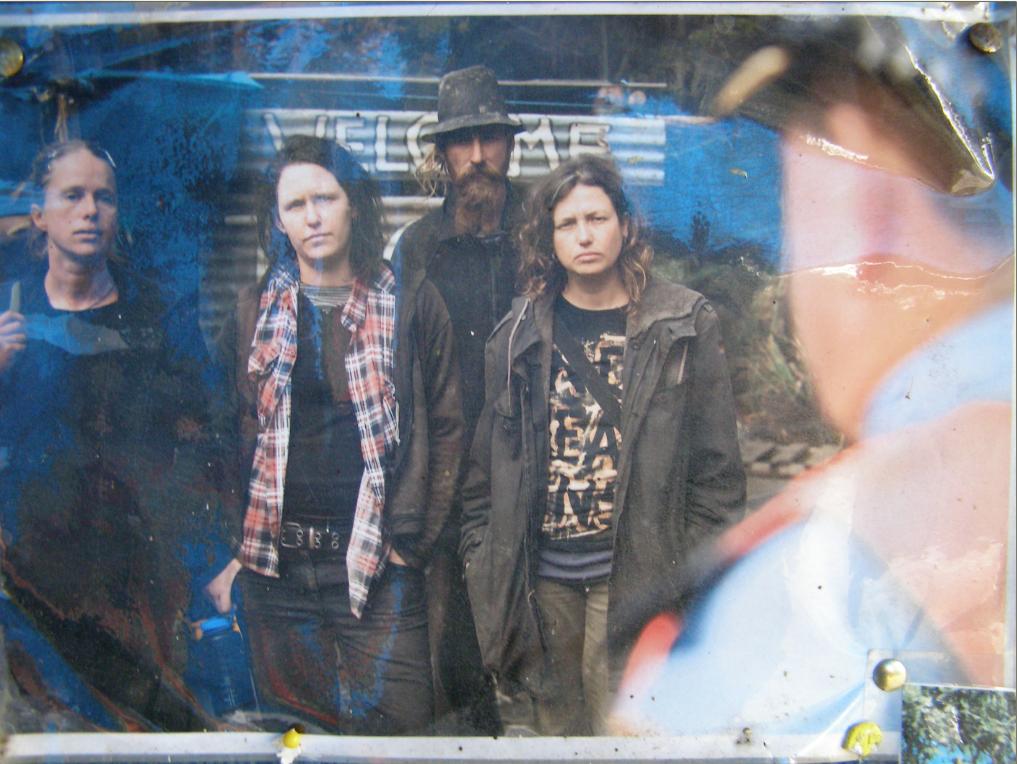 For the cause and their honour
Camp Flozza remembered For the cause and their honour
Camp Flozza remembered
.
New Tasmanian Premier Will Hodgman believes in a headline sense of “economic renewal” somehow and that his vote to power provides a Viking Mandate for him to ecologically ‘rape pillage and plunder’ Tasmania’s natural resources.
With the business community on side, the minerals council, the housing industry association, the developers, the loggers, everything is up for grabs, especially Tasmania’s old growth forests.
Logging trucks are already crossing back over Bass Strait from exile in parochial log state Queensland.
Here we go again…
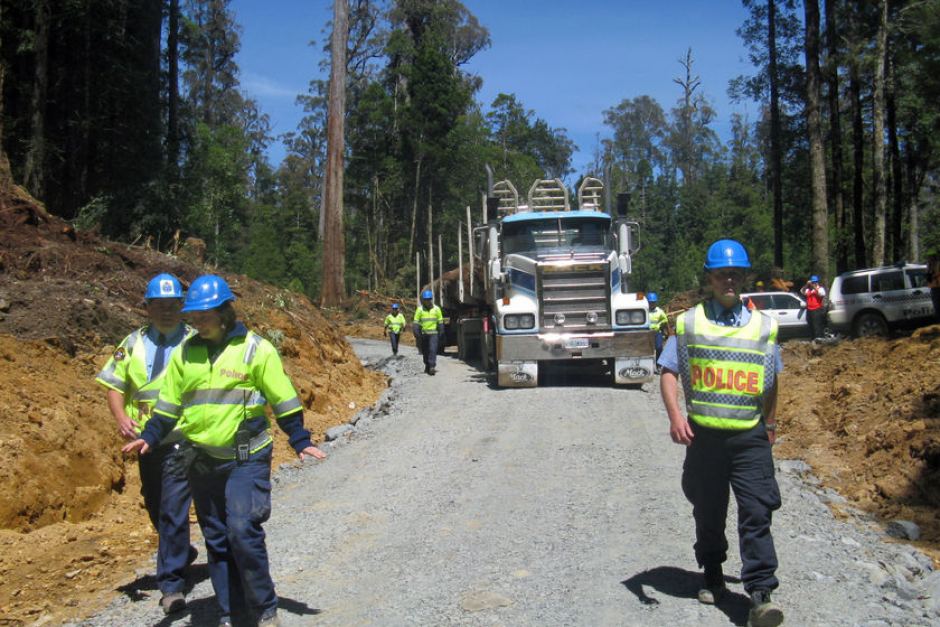 Tasmanian police escort a log truck out of the Upper Florentine Valley after a week of protests, January 2009.
[Source: ‘Protests have failed to stop the log trucks’, 20090121, ABC News,
^http://www.abc.net.au/news/2009-01-21/tasmanian-police-escort-a-log-truck-out-of-the/273180] Tasmanian police escort a log truck out of the Upper Florentine Valley after a week of protests, January 2009.
[Source: ‘Protests have failed to stop the log trucks’, 20090121, ABC News,
^http://www.abc.net.au/news/2009-01-21/tasmanian-police-escort-a-log-truck-out-of-the/273180]
.
“We are going to embrace a new way of doing things in this state,” Mr Hodgman said.
Scary. What does he mean by that?
Not one for mature mediation, ham-fisted Hodgman is determined to tear up the $273 million ‘Tasmanian Forest Agreement‘ in what he has off-handedly vilified as a “job-destroying forest deal.” “It only threatened to lock away forever future productive forest.”
But how many Tasmanian loggers got paid out by Canberra’s $273 million Will? How much of that $273 million is left? Are you endorsing two-timing loggers – those paid out and now in for second crack?
So the hated 19th Century wood chip pulp mill is back on the table, with no prospect of profit, just a ‘work-for-the-dole’ scheme for crusted-on loggers.
But Hodgman, like Groom and Rundle before him, is sure short-term market conditions for woodchips will improve. Six hundred year old forests are renewable anyway Will reckons. Will says he has a mandate to follow through on the divisive election promise. “More wood equals more jobs” and “our plan focuses on growing the industry … not appeasing environmentalists.”
Dem’s fightin’ words indeed!
“I can’t do this on my own with these. . . people.”
Hodgman’s heavies are regrouping and more police are being recruited and resourced. Hodgman is prepared for Forest War on the belief he has the endorsement of high-T Tasmanians.
“We will not allow the past to drag us down and stop us from moving ahead. We understand where we should move.” ~ Vladimir Putin.
 . .
[Sources: ‘Premier claims Tasmania in period of economic renewal since Liberals seize power’, by Lucy Shannon, 20140407, ABC News, ^http://www.abc.net.au/news/2014-04-06/premier-claims-tasmania-has-entered-a-period-of-economic-renewa/5370640; ‘Tasmania’s forest agreement to be ‘torn-up’’, 20140410, ^http://www.enviroinfo.com.au/tasmanias-forest-agreement-to-be-torn-up/]
.
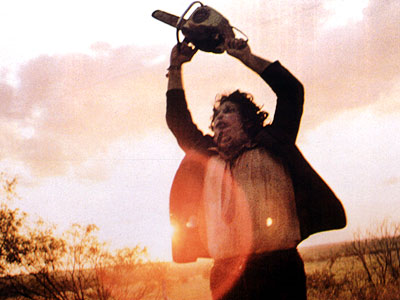 Does young Will mean blood? Does young Will mean blood?
.
Rally to Defend Tasmania’s World Heritage in the Upper Florentine!
.
When: Sunday, 27 April 2014
Time: 12 noon for 12:30pm start
Where: Camp Flozza, In Tasmania’s magnificent Florentine Valley World Heritage Area, Gordon River Road, 21 km east of Maydena
(From Maydena drive along Gordon River Road, heading towards Lake Pedder. On the right, 3.3 km from the Thumbs Lookout, there will be signs for rally).
.
Tasmanians and Australians this is your time!
The Bob Brown Foundation is hosting a rally in World Heritage listed forests of the Upper Florentine, Tasmania, in response to the Australian Government’s intention to remove 74,000 ha from the Tasmanian Wilderness World Heritage Area.
Speakers include Senator Christine Milne – Leader of the Australian Greens, Peg Putt – CEO of Markets for Change and Miranda Gibson – spokesperson for Still Wild Still Threatened.
Bob Brown Foundation Campaign Manager Jenny Weber said, “Tasmania’s globally significant World Heritage Area is gravely threatened by the Australian Government’s request to the World Heritage Committee to remove 74,000ha of forests from World Heritage listing. We are receiving huge support from members of the public who are coming along to this rally, people who love these forests and don’t want to see the listing stripped from forests which have outstanding universal values.”
“We will stand together in the magnificent World Heritage listed Upper Florentine forests to support the world heritage convention and call for protection of Tasmania’s Wilderness World Heritage Area and the maintenance of the current boundary. Standing together among the ancient tall eucalyptus forests, we will prove that the Australian Government is wrong in claiming that it is logged and degraded,” Jenny Weber said.
“The Upper Florentine is pristine. This entire region is proposed for removal from the World Heritage Area, though it is a perfect contradiction of the Liberal Government’s claims that these 74,000 ha are logged or degraded. The Upper Florentine is an extensive area of pristine tall eucalypt forest, part of a corridor of tall eucalyptus forests from the far south to the central west of Tasmania, recognised as World Heritage in 2013. This intact region of ancient forest is again under threat by the Australian Government’s proposal to remove these magnificent intact forests for logging,” Jenny Weber said.
World Heritage Campaign Manager
The Bob Brown Foundation
[Source: ^http://www.bobbrown.org.au/rally_to_defend_world_heritage]

.
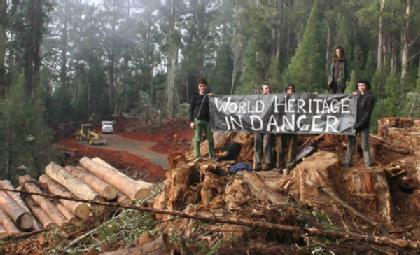 Sacred Upper Florentine Valley being logged only a few years ago Sacred Upper Florentine Valley being logged only a few years ago
.
For Tasmanians, Tasmania is all we’ve got.
.
Tags: Bob Brown, Camp Flozza, economic renewal, Forest War, Forestry Tasmania, loggers, logging trucks, Pulp Mill, Tasmania, Tasmania Police State, Tasmania’s World Heritage, Tasmanian Forest Agreement, Tasmanian Police, Upper Florentine Forest, Upper Florentine Valley, Viking Mandate, Will Hodgman, wood chip
Posted in Tasmania (AU), Threats from Deforestation, Threats to Wild Tasmania | 1 Comment »
Add this post to Del.icio.us - Digg
Friday, December 30th, 2011
What area of old growth native forest has been saved from business-as-usual deforestation as a result of the United Nation’s declaration of 2011 as the International Year of Forests?
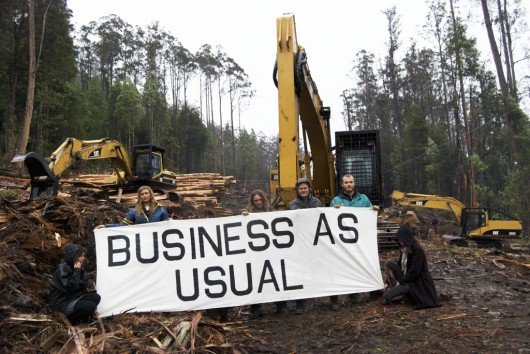 In Tasmania frankly it’s been logging Business-as-Usual
for taxpayer-funded ‘Forestry Tasmania’
(Source: Still Wild Still Threatened,
^http://observertree.org/2011/12/22/mirandas-daily-blog-day-8/) In Tasmania frankly it’s been logging Business-as-Usual
for taxpayer-funded ‘Forestry Tasmania’
(Source: Still Wild Still Threatened,
^http://observertree.org/2011/12/22/mirandas-daily-blog-day-8/)
.
UN International Year of Forests 2011 – ‘Global Objectives‘?

This is (was) the official UN website: ^http://www.un.org/en/events/iyof2011/
.
Well, at the time of writing, the public relations material on the official UN website conveys a general message that the ‘Forests 2011‘ programme is intended “to strengthen global efforts to improve the state of forests” and draws upon its dedicated subsidiary United Nations Forum on Forests (UNFF), adopting four Global Objectives:
- Reverse Forest Loss – reverse the loss of forest cover worldwide through sustainable forest management, including protection,restoration, afforestation and reforestation, and increase efforts to prevent forest degradation.
- Enhance Forest-based Benefits – economic, social and environmental benefits, including by improving the livelihoods of forest-dependent people.
- Increase Sustainably Managed Forests – including protected forests, and increase the proportion of forest products derived from sustainably managed forests.
- Mobilize Financial Resources – reverse the decline in official development assistance for sustainable forest management and mobilise significantly-increased new and additional financial resources from all sources for the implementation of sustainable forest management.
.
[Source: ^ http://www.un.org/en/events/iyof2011/forests-for-people/global-objectives/]
.
Sounds encouraging, but where are the stated deliverables?, key result areas?, key performance indicators?, programme targets?, UN budget to achieve these global objectives? Where is the implementation plan and the delegated implementation task force?
The website is thick on its public relations message, but thin on substance. In the absence of any mention of the means to achieve these four objectives, my initial reaction is that it is more motherhood and perhaps just about ‘raising awareness‘. But don’t we already know that deforestation is a critical global problem?
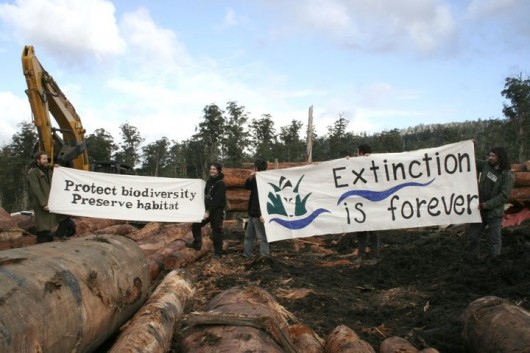
.
The aim of the UN International Year of Forests 2011 seems to have merely been “to raise awareness and strengthen the sustainable management, conservation and sustainable development of all types of forests for the benefit of current and future generations“.
.
It just sounds like more Forestry spin!
.
And ‘sustainable forest management‘ is a familiar phrase and one bandied about not by environmentalists, but by forestry industry – i.e. industrial loggers. Type ‘sustainable forest management’ in Google at look at the websites results:
- Australian Government Department of Agriculture, Fisheries and Forestry (i.e. derives revenue from logging)
- Australian Forest Education Alliance (AFEA) – includes members from Australian Forest Products Association, Forests NSW, Forest Education Foundation Tasmania, Forest and Wood Products Australia, Primary Industries and Resources South Australia, Forestry Sustainable Forestry Program (Southern Cross University), NSW Forest Products Commission WA, VicForests (i.e. all derive revenue directly from logging, or subsidised by industrial loggers)
- Forestry Tasmania (i.e. derives revenue from logging)
- Forests NSW (i.e. derives revenue from logging)
- Food and Agriculture Organisation of the United Nations (encouraged forest be used for wood production)
- The Institute of Foresters of Australia
- Department of Sustainability and Environment (Victoria) (encouraged logging and burning of native forests)
- etc.
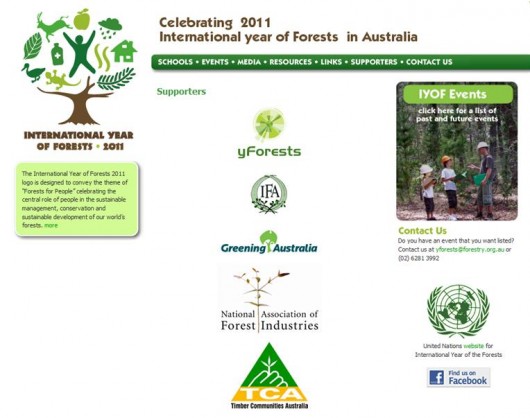
.
UN International Year of Forests 2011 – ‘Global Achievements‘?
.
The only other information that may be gleaned from the official UN site covers topics such as promotional events, films, photos, collaborative global partner organisations plus some forest statistics, a few online publications but that’s about it. So today on 30th December 2011 as the International Year for Forests draws to a close, what has the UN programme actually achieved?
What area of the world’s native forests has been protected from otherwise business-as-usual deforestation? What has stopped Forestry Tasmania and its band of loggers from their business-as-usual holocaust treatment of Tasmania’s endangered ancient native forest ecosystems?
Answer: More PR funding for the UN’s next programme?
.
Australian Government’s endorsement of International Year of Forests 2011
.
Rather than convey an assessment here, I shall just quote from the Australian Government’s website dedicated to supporting this programme (before it vanishes):
.
[Source: ^ http://www.internationalyearofforests.com.au/]
.
Australia’s Forests
.
‘Australia has some of the most beautiful and productive forest areas in the whole world. These fantastic and magical places mean a lot of different things to different people. Some of us work with the wood from the forests. Some work with the creatures that live in the forests. Some of us live in the forests and some of us play in the forest (camping, hiking, exploring) and some of us just love looking and being in a forest!
‘Without a doubt what ever your use, be it a little or a lot, Australian’s should be proud of Australia’s forests!
‘The United Nations announced 2011 as the International Year of Forests. Australians can unite and celebrate our sustainably managed forests and the diversity that our forests bring to our lives. Our forests give us wood that we use every single day and these very same forests give us the best playground that our kids could ever hope for. Australia’s forests are used by everyone and are the best in the world!
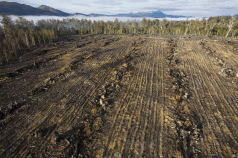
.
Ministers Address
.
‘Australia has about 4 per cent of the world’s forests on 5 per cent of the world’s land area, and has one of the best managed forestry sectors in the world.
‘The nation’s forests, and the products they produce, provide significant employment, environmental and recreational benefits to communities across Australia. Australia’s forestry and wood manufacturing sector employs nearly 76,000 people, many in regional areas, and generates around $7 billion worth of wood and paper products annually.
‘Across the nation the forests in conservation reserves cover over 23 million hectares. These reserves provide recreational benefits for communities and contribute to the 12 billion tonnes of carbon stored by Australian forests. Industry and government have been working hard to make sure our forests remain sustainable and viable for the long-term.
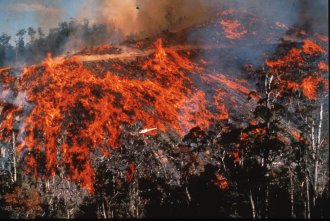
‘The Australian Government recognise the importance of World Forestry Day and the International Year of Forests and has actively supported both initiatives. This year the Gillard Government intends to release legislation to ban the importation of timber products that have not been legally harvested. This law will contribute to global efforts to stop illegal logging, provide for sustainable forest products made in Australia and reduce unfair competition. The Gillard Government remains committed to promoting sustainable forestry initiatives and encourages people to celebrate the International Year of the Forest.’
Senator Joe Ludwig,
Minister for Agriculture, Fisheries and Forestry
.
And guess who’s embraced the 2011 International Year of Forests with public relations relish?
.
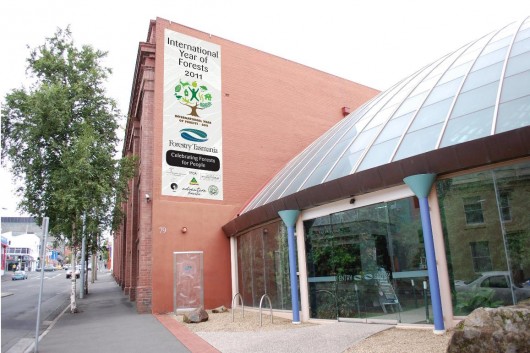 Forestry Tasmania Forestry Tasmania
“Congratulations to Forestry Tasmania (FT) who held a successful Tasmanian launch of International Year of Forests. Held in Hobart on 25 January the ‘forest in the city’ event proved to be a popular summer holiday diversion with a steady stream of families, shoppers and naturalist flowing in to the Melville Street Dome throughout the afternoon.”
.
[Source: ^http://www.internationalyearofforests.com.au/news.php]
.
.
‘International Year of Forests 2011 off and running in Tasmania’
.
[Source: Forestry Tasmania website, 20110131, ^http://www.forestrytas.com.au/news/2011/01/international-year-of-forests-2011-off-and-running-in-tasmania?utm_source=feedburner&utm_medium=feed&utm_campaign=Feed:+forestrytas+%28ForestryTas.com.au+News+and+Topics%29]
..
‘Forestry Tasmania (FT) kicked off its celebrations for the United Nations International Year of Forests 2011 with an open day at the ‘forest in the city’ in its Hobart headquarters on 25 January. The event proved to be a popular summer holiday diversion, with a steady stream of families, shoppers and naturalists flowing into the Melville Street Dome throughout the afternoon. Their curiosity was rewarded by science and fire fighting displays, indoor abseiling, and even the opportunity for the young (and young at heart) to have their photo taken with ‘Krusty’, FT’s very own giant freshwater crayfish.
 Forestry Tasmania’s promotional campaign for the International Year of Forests 2011
…to educate children early on that Forestry is good for native forests.
Tasmania’s endangered Giant Freshwater Crayfish just loves loggers destroying its habitat.
Get ’em while they’re young Bob! Forestry Tasmania’s promotional campaign for the International Year of Forests 2011
…to educate children early on that Forestry is good for native forests.
Tasmania’s endangered Giant Freshwater Crayfish just loves loggers destroying its habitat.
Get ’em while they’re young Bob!
.
Forestry Tasmania’s General Manager Corporate Relations and Tourism, Ken Jeffreys, said the open day was just a taste of things to come, with a 12-month calendar of events planned to celebrate the International Year of Forests.
“We have a number of exciting projects scheduled over the next year, such as the opening of new accommodation at Tahune, to be called the AirWalk Lodge.
“This development will, for the first time, see family accommodation available at one of Tasmania’s most highly visited tourism attractions. It will allow our guests to spend a full day experiencing all of the activities on offer at the AirWalk, as well as the many other attractions on offer in the Huon Valley.
“The year will also see a number of high-profile sporting events on state forest, including mountain biking and the multi-sport Ben Lomond Descent.
“And one of our bursary recipients, Shannon Banks, is going to attempt to visit all 52 of our recreation and tourism attractions around the State over the year. She’ll be writing a blog about her adventures, which we hope will inspire Tasmanians to experience the wonders of the forests in their own backyard.”
.
Mr Jeffreys said FT’s staff were excited by the opportunities presented by the International Year of Forests 2011.
“This year, we want to show the community that we are proud of the work we do to ensure the full range of forest values are maintained in perpetuity. Our staff worked hard to create displays for the launch that were fun and informative. The public’s reception showed us that there is a great deal of interest, and open-mindedness, about the way our forests are managed.”
.
Speech notes Simon Grove (Conservation Biologist with Forestry Tasmania – Division of Forest Research & Development):
.
‘Before I hand over to Rebecca White MHA to officially launch the International Year of Forests, I’ve been asked to say a few words about what our forests mean to the people that work here in Forestry Tasmania. Since our values come from our personal life-experiences, all I can do is tell you my own story, while recognising that every one of us here has their own story too.
I work as a researcher, a conservation biologist, with Forestry Tasmania. In some ways I deal with the meat in the sandwich that is forestry today – what does nature have to say about how we manage – or should manage – the forests in our care? But I want to start at the beginning. Life is all about discovery, learning and figuring things out, and I was lucky to discover early in life that nature, and forests, can be an excellent source of inspiration and experimentation. So here are a few of my naturalists’ memories, going back to toddlerdom.
I remember:
- Figuring out that earthworms have bristles that work like legs – if you fill an empty milk-bottle with worms and then leave the milk-bottle in the kitchen, the worms climb out and slither all over the kitchen floor.
- Learning that if I sat very still in the woods, I could watch the native mice going about their lives – and I could even catch them in my hands – but that they would bite my little sister’s hands if she tried the same thing.
- Learning that bumblebees loved the nectar of honeysuckle flowers as much as I did – and that they wouldn’t sting if I picked them up to enjoy the sensation of having them buzzing around in my cupped hands – but that they would sting my little sister’s hands if she tried the same thing.
- Discovering that it wasn’t only nasty wasps that filled the summer air with their droning, but beautiful flower-loving hoverflies – but little sisters aren’t always good at telling them apart.
- Realising that hungry ground-beetles eat lizards if you keep them in the same cage and don’t feed them.
- Learning that baby starlings abandoned by their parents get too hot if you try and incubate them on the boiler.
- Discovering that tadpoles kept in a glass jar don’t turn into frogs unless you give them some land to climb out onto.
- Realising that flower-presses were designed for delicate plants such as dandelions, and not for cacti.
- Learning that seashells brought back from the beach get very smelly if they still have their animals in them.
- Discovering that puffball fungi give off clouds of spores if you wee on them.
- Discovering that blackbirds’ eggs taste as good as chooks’ eggs if you fry them up on a camping stove in the garden.
- Figuring out that foxes eat cherries – you can find the stones in their poos.
- Figuring out that I could make wonderfully whiffy stink-bomb mixture by adding all sorts of sordid ingredients – dog-poo, apple-cores, ink – to the liquid accumulating in the bottom of a tree-hollow; but that if I then added real chemical stink-bomb ingredients to this then I ended up with dead-maggot stew instead.
.
We all have stories like this. (Ed: perhaps only at FT) In retrospect, we can see that they make us who we are today. Our challenge is to ensure that the next generation is encouraged to explore and experiment too.
I didn’t grow up in Tasmania, but the other side of the world in England. But I don’t think it would have made much difference to my outlook as a child. Nature’s all around us, and children the world over are tuned into it. If it’s nurtured, as it was in me, the empathy for nature can grow. Otherwise it may die away. The presence here today of so many families and children is testament to the amount of nurturing going on around us – which is wonderful to see. And what better place to do so than in our forests.
Some of us are lucky in that as adults we still get to liberate our inner child from time to time – every day if we’re very lucky. That’s how I’ve managed to live my life since leaving school – right through the years of university study; of working with nature conservation organisations in the UK; of working in Uganda as a conservation trainer in the forest department and in Indonesia as a training adviser on an international sustainable forest management project. It’s how I lived my life when I was researching rainforest insects in North Queensland for my PhD. And it’s how I have done so for the past decade as a conservation biologist here at Forestry Tasmania.
And despite what you might expect from media coverage of forestry issues, I don’t feel alone. Many people working in forestry here in Tasmania are naturalists at heart, and many more who wouldn’t call themselves naturalists nevertheless have a deep appreciation for the bush and an understanding of what makes it tick. Not so much sawdust in our veins, as bushdust – an empathy with the forests, and a recognition that we humans are not so much their lords and masters as their stewards.
My brother and I used to call chainsaws ‘long bottoms’, because to my ear they sounded like someone doing a very long fart. Later in my youth I came to see them as the conservationist’s friend, as we went about clearing wildling pines invading the heathland where rare birds nested. Today I know that chainsaws also have more prosaic functions – people use them to harvest trees so that they can be turned into products that we all use, such as timber and paper. This would be a tragic end for the forest if harvest were indeed the end-point. But it’s not, because experience shows that the elements of nature displaced by the harvest begin to move straight back in almost as soon as the chainsaws fall silent, and the forest begins to regrow and to fill with life again.
A background in natural history is good for making connections – among species and among natural processes. We learn that eagles feed on pademelons that graze on grasses and browse on young saplings; eagles nest in the old trees that grew up after the last wildfire and that escaped the browsing of pademelons; fungi and beetles recycle the trees – and even the eagles and pademelons – once they die. Eagles, trees, fungi, pademelons and beetles are all connected. Those of us steeped in natural history and ecology also make connections between humans and the rest of nature. We’re the original environmentalists. We recognise that the world faces not only a GFC but also a GEC – a global environmental crisis. I should emphasise that this crisis is not the outcome of sustainable forestry. But it is the cumulative outcome of all of our growing material demands outstripping the planet’s ability to supply. We all – especially our children – have to deal with the consequences.
In this context, we still expect the world’s remaining forests to be reservoirs of nature and yet to continue to supply our material and spiritual needs. It’s a big ask, but it can be done – certainly so in a place like Tasmania, with all the expertise in forestry and conservation at our disposal.
If I’ve discovered one big theme about the natural world during my life, it is that nature, for all its fragility, is remarkably resilient – think how forests recover after a bushfire. And the main take-home message from the forestry Masters course that I took at Oxford all those years ago, reinforced by daily experience since then, is that forestry is as much about people as it is about trees. Connecting the two concepts I come to a heartening conclusion. Through the increasing value that all of us place on our forests, they look set to become landscapes not of conflict but of reconciliation. Let’s see if we can use this International Year of Forests to further that end.
I’d now like to formally hand over to Rebecca White MHA, so that she can officially launch this International Year of Forests as Forestry Tasmania’s Ambassador.’
.
(Tasmanian) State Labor Member for Lyons and International Year of Forests Ambassador, Rebecca White MP, was on hand to officially launch Forestry Tasmania’s celebrations for 2011. She said the UN’s theme for the year, ‘celebrating forests for people’, had struck a deep chord with her.
“This theme resonated deeply with me, as it conveys the need to manage forests for many values, including conservation and sustainable development. It means that these values, which are often portrayed as being in conflict, are in fact intertwined. It also recognises that people are central to the effective management of forests.
“With careful, scientifically driven management, such as we have in Tasmania, there need not be a contradiction between conserving biodiversity and providing wood products and other non-commercial values from forests.
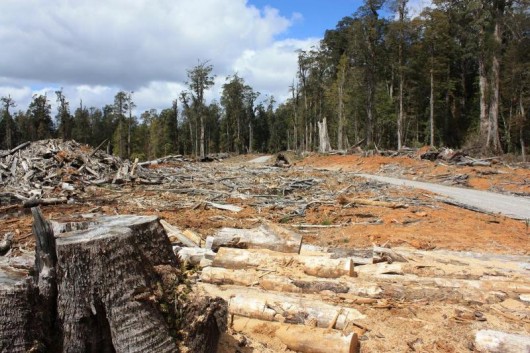 Forestry Holocaust of the Tarkine, October 2009
Forestry Holocaust of the Tarkine, October 2009
.
“While not all values may be delivered in any one area of forest, they are delivered across the entire landscape. While there are of course a number of challenges confronting the forest industry at present, it’s nonetheless important to remember that our state forests provide skilled employment for thousands of Tasmanians, and indirect employment for many more in our rural and regional communities.
“And of course, our state forests also provide clean drinking water to our towns and cities, they store the equivalent of 24% of Tasmania’s carbon emissions each year, and they provide a host of recreation activities and tourism attractions that appeal to locals and visitors alike.”
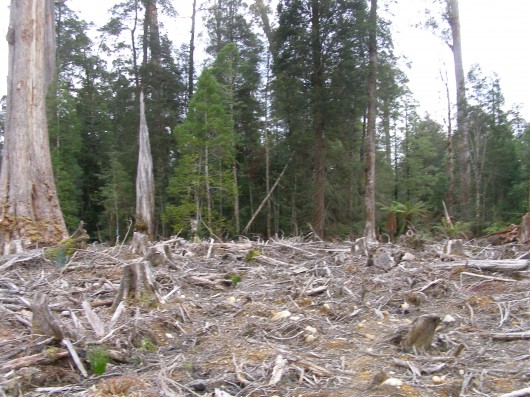 Upper Florentine old growth forest clearfelled by Forestry Tasmania in 2009,
situated behind Forest Defenders’ Camp Flozza
(Photo by Editor 20110928, free in public domain, click to enlarge) Upper Florentine old growth forest clearfelled by Forestry Tasmania in 2009,
situated behind Forest Defenders’ Camp Flozza
(Photo by Editor 20110928, free in public domain, click to enlarge)
.
World Deforestation Clock
.
- Each year about 13 million hectares of the world’s forests are lost due to deforestation, but the rate of net forest loss is slowing down, thanks to new planting and natural expansion of existing forests.
- From 1990 to 2000, the net forest loss was 8.9 million hectares per year.
- From 2000 to 2005, the net forest loss was 7.3 million hectares per year – an area the size of Sierra Leone or Panama and equivalent to 200 km2 per day.
- Primary forests are lost or modified at a rate of 6 million hectares per year through deforestation or selective logging.
- Plantation forests are established at a rate of 2.8 million hectares per year.
.
NOTE: 13,000,000 hectares/year = .412 hectares/sec
[Source of statistics: FAO Forest Resources Assessment 2005]
See the World Deforestation Clock at http://www.cifor.org/defclock.
.
Tags: clearfell, Corporate Relations, Forestry Holocaust, Forestry spin, Forestry Tasmania, giant freshwater crayfish, Logging, logging business as usual, sustainable forest management, tarkine, UN International Year of Forests, UN International Year of Forests 2011, United Nations Forum on Forests, Upper Florentine Forest, Upper Florentine Valley
Posted in Tasmania (AU), Threats from Deforestation, Threats from Greenwashing, Threats to Wild Tasmania | No Comments »
Add this post to Del.icio.us - Digg
Friday, December 30th, 2011
This is a scab: . .
These are Forestry Scabs:
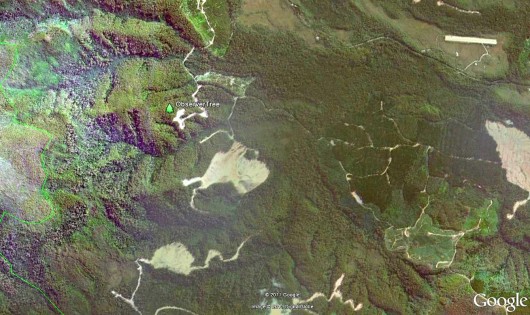 Forestry Scabs of clearfelled Tasmanian endangered old-growth forests
Google Earth reveals the clearfell truth behind the Forestry propaganda
(Click satellite image to enlarge – note environmental protestors’ ObserverTree)
To download Google Earth software (93MB), go to: ^http://www.google.com/earth/index.html Forestry Scabs of clearfelled Tasmanian endangered old-growth forests
Google Earth reveals the clearfell truth behind the Forestry propaganda
(Click satellite image to enlarge – note environmental protestors’ ObserverTree)
To download Google Earth software (93MB), go to: ^http://www.google.com/earth/index.html
.
This is an aerial close up of Forestry Scabs:
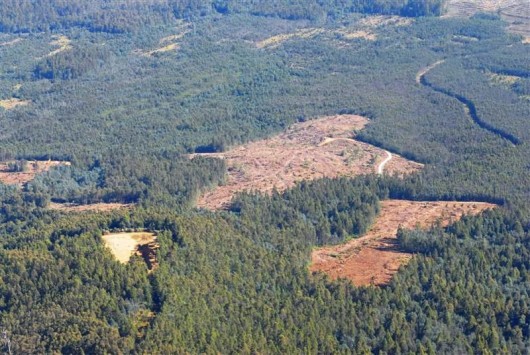 Forestry Scabs pocking the endangered Upper Florentine Forest, 2011 Forestry Scabs pocking the endangered Upper Florentine Forest, 2011
.
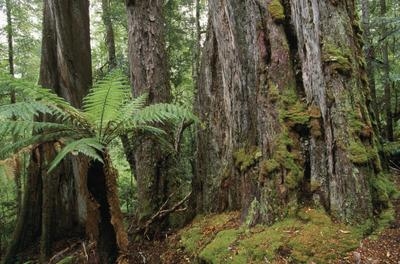 This is the ‘Forestry Plunder’
Old Growth which in the case of the Styx Valley, Forestry Tasmania labelled ‘Coupe SX015‘ This is the ‘Forestry Plunder’
Old Growth which in the case of the Styx Valley, Forestry Tasmania labelled ‘Coupe SX015‘
.
Recall 2006: ‘Forests protected: another tall story‘
.
[Source: ‘Forests protected: another tall story”, in Tasmanian Times, 20060327, ^http://tasmaniantimes.com/index.php/article/forests-protected-another-tall-story]
.
Two days after the election the police moved into the Styx Valley to apprehend a small band of protesters. An arrest was made and a 70-metre-tall tree holding a protest platform was blown up! Cable logging was set to resume in the Styx Valley of the Giants.
Yet last year both the state and federal Governments claimed that they had saved the giant trees of the Styx. Indeed, they claimed to have resolved the entire forests debate.
This week’s developments have given the lie to those claims. Not only is logging making a comeback in the Styx; it is also about to start in parts of the Weld and Upper Florentine that have never before seen a chainsaw. Other key areas are likely to follow, from the Tarkine in the far north-west, where there are still 400 square kilometres of threatened oldgrowth forest, to South Sister on the East Coast, Bruny Island in the south and the beleagured north-east highlands.
The Styx case is a classic example of how the governments deal with forest issues. One of the new reserves they have promised to create is the 336-hectare Styx Tall Trees Forest Reserve. This reserve occurs on either side of Skeleton Road, the road up which 4000 people marched on a cold, drizzly day in July 2003 to protest at logging.
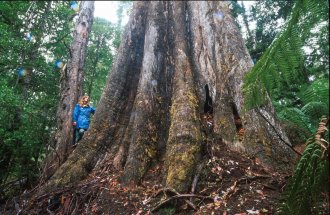
The Reserve’s southern boundary occurs very close to the huge stump on which speakers at the rally delivered their speeches. The reserve contains several well-known giants, including the Chapel Tree — an 85-metre-tall giant which is the second most massive known living thing in Tasmania. It also contains the Mount Tree and Icarus Dream, which, at 96 and 97 metres respectively, are the tallest known trees in the Southern Hemisphere. The Two Towers, Gothmog, the Perfect Tree and the Andromeda Twins are other registered giants within the reserve.
Declaration of this reserve will be very welcome. However, cold hard scrutiny reveals that very little loggable forest has been conceded by the industry here. About 20 hectares were already in the informal Andromeda Reserve, which contains some of the tall trees mentioned above. In addition, Forestry Tasmania’s Giant Trees policy and protocols, adopted in the wake of the El Grande debacle, require the establishment of buffers of at least 100 metres radius around each registered giant. The abundance of giant trees in this patch of forest means that logging had already been severely curtailed.
In essence, the creation of the Styx Tall Trees Reserve is a minimalist recognition that little logging could have proceeded amongst these statuesque giants anyway.
.
Protected the bare minimum area
.
A look at the mapped boundaries of the reserve shows them to be very convoluted. That’s because the reserve has been designed to accommodate areas planned for logging.
Last year, Forestry Tasmania scheduled 26-hectare coupe SX18F. This created a cable-logged cut on the steep slopes immediately south-east of the Reserve. The imminent destruction of the tall oldgrowth forests in coupe SX15A will mark the southern edge of the reserve. Immediately west of the reserve is the already-logged SX13D and the scheduled SX13K. Later in the logging schedule come SX18E and SX13J.
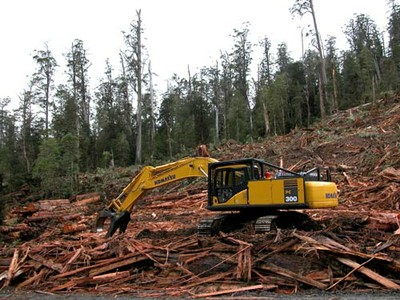 Forestry Tasmania logging the Styx Valley of its ancient old growth Forestry Tasmania logging the Styx Valley of its ancient old growth
.
The conclusions to be drawn from this are simple.
Forestry Tasmania protected the absolute bare minimum area of tall-eucalypt forest in the Styx Tall Trees Forest Reserve.
.
“Forestry Tasmana is now embarking on a program of ringing the reserve with new coupes. This appears to be an obvious bid to pre-empt any future expansion of the reserve. This strategy will have the effect of isolating the giants from adjacent protective forest. The reserve will become increasingly prone to the ‘edge effects’ of fire, wind and disease. This situation is not assisted by the messy design of the reserve.”
.
Forestry Tasmania will claim that it has protected these giants and met all of its legislated obligations. In fact, Forestry Tasmania has still failed to meet the targets set in the RFA for the protection of oldgrowth Eucalyptus regnans — the tallest flowering plant on Earth.
The Howard Government has been a party to this sham, providing millions of dollars of taxpayers’ funds to the logging industry and state government as ‘compensation’.
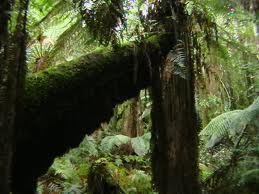
.
‘Forests Onslaught to Follow Election’
.
by Geoff Law, Tasmanian Campaign Coordinator, The Wilderness Society, 20060318, comment to an article in the Tasmanian Times of a speech made by Richard Flanagan, Parliament House Rally, Hobart, 16 March 2006, ^http://tasmaniantimes.com/index.php?/article/we-will-not-give-up/]
.
‘An onslaught of burning, logging and clearing in Tasmania’s forests will follow Saturday’s election, according to the Wilderness Society.
“New logging operations in the Styx, South Sister, Weld and Jackeys Marsh, huge new areas of tree-clearing, and another 30,000 hectares of burning are set to follow the election,” said the Society’s Tasmanian Campaign Coordinator, Geoff Law.
The burning program is set out in a brochure about forestry burn-offs distributed by Forestry Tasmania and FIAT in the Derwent Valley Gazette on Wednesday. It says: This autumn, the forest industry plans to prepare about 30,000 hectares of land for planting or sowing in patches scattered across Tasmania.
Logging is also poised to move into contentious forests in the Upper Florentine, at South Sister and unprotected parts of the Tarkine.
Mr Law said that his warning was based on:
- Forestry Tasmania’s attempt to log coupe SX15A in the Styx Valley, which was put on hold two weeks ago after the efforts of a handful of protesters. The logging machinery is poised and ready to go as soon as the election is out of the way.
- Forestry Tasmania’s interim draft Three Year Plan which has scheduled almost 16,000 hectares of tree-clearing for this calendar year as well as logging at South Sister, Jackeys Marsh, in the Weld and Upper Florentine Valleys and unprotected parts of the Tarkine
- The brochure on burning, which presents ‘Facts about the forest industry’s planned burning program during Autumn’ and which foreshadows 30,000 hectares of burning this autumn.’
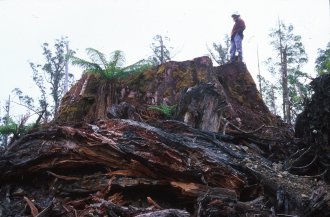 A Styx Legacy
A Eucalyptus regnans giant stump is all that remains of one of the huge trees
felled to make way for the logging road in coupe SX 15A in the Styx Valley.
^http://www.lexicon.net/peterc/Tasmania/Tas01.htm A Styx Legacy
A Eucalyptus regnans giant stump is all that remains of one of the huge trees
felled to make way for the logging road in coupe SX 15A in the Styx Valley.
^http://www.lexicon.net/peterc/Tasmania/Tas01.htm
.
‘Forestry Tasmania’s Sustainability Charter for Threatened species, communities and habitats‘
.
“Aim: Maintain viable populations of all existing animal and plant species and communities found in State forests.
This will involve:
- Increasing understanding of ecology and habitats of threatened species and communities and implementing appropriate management
- Active participation in the management of threatened species, communities and habitats
- Implementing specific strategies to protect threatened species and their habitats.”
.
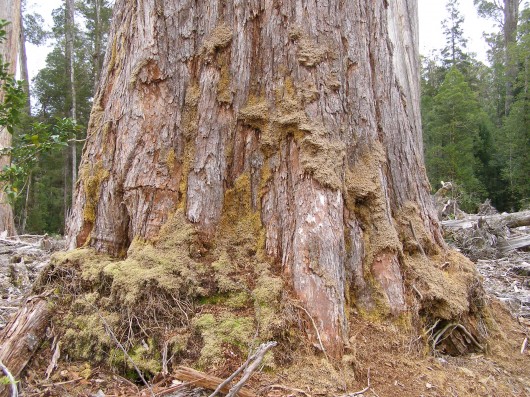 A rare giant Eucalyptus regnans of the nearby Upper Florentine
(Photo by Editor 20110928, free in public domain, click photo to enlarge) A rare giant Eucalyptus regnans of the nearby Upper Florentine
(Photo by Editor 20110928, free in public domain, click photo to enlarge)
.
2012 Year of the Forestry Scab?
.
In late 2011 and now going into 2012, Forestry Tasmania are at it again, trying to clearfell the Styx Valley of its old growth.
Get the lastest from the forest protest at The ObserverTree below Mount Mueller in the Styx Valley.
.
Tags: Andromeda Twins, Chapel Tree, coupe SX15A, Eucalyptus regnans, forestry scab, Forestry Tasmania, Google Earth, Gothmog, Icarus Dream, Mount Tree, old growth forest, Perfect Tree, Styx Forest, Styx Tall Trees Forest Reserve, Styx Valley, Styx Valley of the Giants, Tasmania, Tasmanian Times, The ObserverTree, Two Towers, Upper Florentine Forest
Posted in Tasmania (AU), Threats from Deforestation, Threats to Wild Tasmania | No Comments »
Add this post to Del.icio.us - Digg
Thursday, October 13th, 2011
If you go down into the woods today you’re sure in for a big surprise…but in Tasmania’s South-West it ain’t no teddy bear’s picnic.
One has to first get past the many infamous locked gates. Forestry Tasmania (aka the State-sanctioned corporate logger) is sure to have locked its steel gates for very good reason – Forestry Tasmania doesn’t want the public to know the truth about what it is doing to Tasmania’s remaining wild forests.
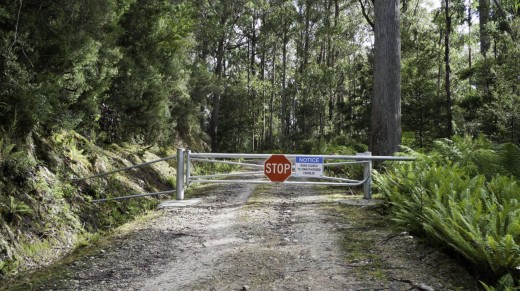 Forestry Tasmania’s locked gate on the public road to the top of Mount Tim Shea
(Suspiciously this public access road was deemed unfit for public travel coincidentally around the same time as Forestry Tasmania opened its ‘Adventure Hub’ in Maydena,
and equally coincidentally one of the hills they charge people for a ride to the top from reads ‘Adventure Hub’).
(Photo by Alan Lesheim) Forestry Tasmania’s locked gate on the public road to the top of Mount Tim Shea
(Suspiciously this public access road was deemed unfit for public travel coincidentally around the same time as Forestry Tasmania opened its ‘Adventure Hub’ in Maydena,
and equally coincidentally one of the hills they charge people for a ride to the top from reads ‘Adventure Hub’).
(Photo by Alan Lesheim)
.
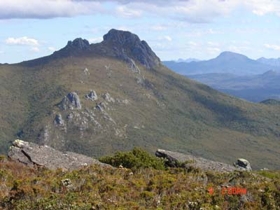 Rugged Mount Tim Shea, South-West Tasmania Rugged Mount Tim Shea, South-West Tasmania
Photo by Forestry Tasmania
^http://www.forestrytas.com.au/topics/2008/06/maydena-adventure-hub-opportunities
.
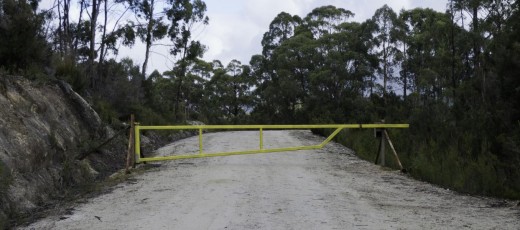 Locked Gate on Five Road in the Upper Florentine Locked Gate on Five Road in the Upper Florentine
(connects to Cook’s Track which enters the Gordon River Road short of Camp Flozza)
(Photo by Alan Lesheim)
.
Forestry Tasmania has hundreds of these padlocked gates throughout Tasmania’s wild forests.
The Wilderness Society’s spokesperson Amanda Sully said “Forestry Tasmania have a locked boom gate over the Huon Valley Wilderness and are refusing entry. This is just one of hundreds of gates on forestry roads in Tasmania.
“It’s very clear who is locking up the forests. People are sick and tired of seeing log truck after log truck coming from the clear felling behind these padlocked gates.
These are publicly-owned forests.
Forestry Tasmania is supposed to manage them for the benefit of all Tasmanians, not just the loggers” Ms Sully concluded.
.
[Source: ‘Forestry Tasmania – Locking up our forests‘, ^http://www.wilderness.org.au/campaigns/forests/19980924_mr
.
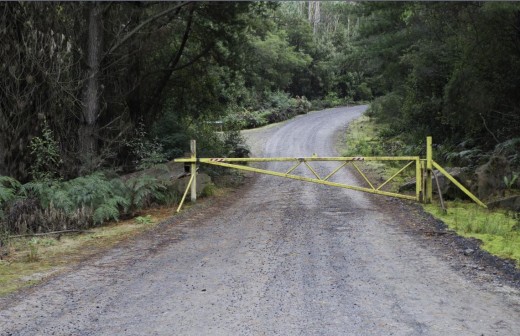 Forestry Locked Gate on Blue Road, northern section of the Upper Florentine Valley Forestry Locked Gate on Blue Road, northern section of the Upper Florentine Valley
(Photo by Alan Lesheim)
.
.
Author Anna Krien was on a quest for the truth described in her revealing expose book of 2010 into what’s stihl happening in Tasmania’s wild forests:
~
‘Most people travelling through Tasmania will never know of the long-running hide-and-seek taking place in the labyrinth of logging roads beyond the bitumen.
Sightseers walk among 300-year-old trees, some of them 90 metres tall, in the Styx Big Tree Reserve, chainsaws can be heard in the distance.
The road into this attraction is lined with stage sets of wilderness.
At the rise of a hill, just before the nose of the car tilts downwards, passengers might glimpse a balding peak, a fleeting insight into the world behind the verge.’
~
[Source: ‘Into the Woods: The Battle for Tasmania’s Forests‘, 2010 by Anna Krien pp.25-26, published by Black Inc. ^http://www.blackincbooks.com/books/woods, includes video interviews].
.
So, this Editor, half way through the book, last month flew down to Hobart, hired a car and retraced the author’s journey into Tasmania’s South-West …
.
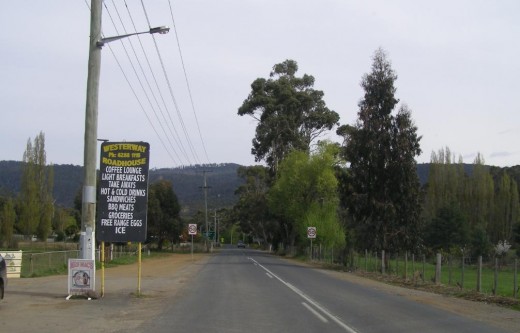 Driving west along the old Hydro Electrical Commission’s (HEC) Gordon River (Access) Road,
through Forestry’s logging town of ‘Westerway’ Driving west along the old Hydro Electrical Commission’s (HEC) Gordon River (Access) Road,
through Forestry’s logging town of ‘Westerway’
.
Noticeably, when driving out of Hobart I passed clearly wealthy residential suburbs, yet driving along the Gordon River Road these few isolated hamlets are not wealthy. Their construction mostly seems temporary like mining companies would construct while the mine delivers. The highway through the hamlets of Westerway, Fitzgerald and Maydena seems only for forest access, not for community.
I parked the car and walked through Maydena.
There is only the odd person out and about. The place seems impoverished – one small primary school, a notable lack of shops, lack of amenities, and little sign of any vibrant community.
It’s as if the profits from logging have driven right through the guts of these local villages and on to big corporations eastward.
.
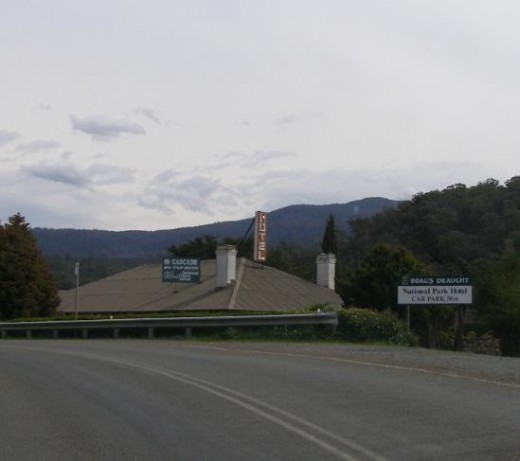 Past the National Park Hotel
where Tasmania’s champion wood-chopper ‘Big Dave’ holds pride of place above the pub’s fire place. Past the National Park Hotel
where Tasmania’s champion wood-chopper ‘Big Dave’ holds pride of place above the pub’s fire place.
.
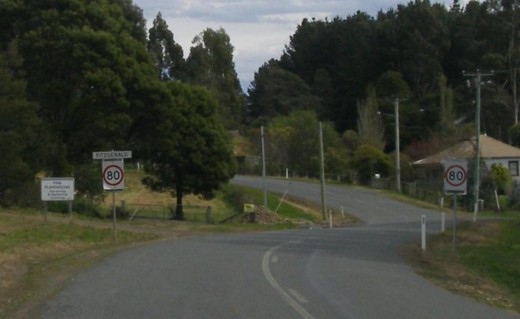 Driving through Forestry’s old logging town of ‘Fitzgerald’
. Driving through Forestry’s old logging town of ‘Fitzgerald’
.
.
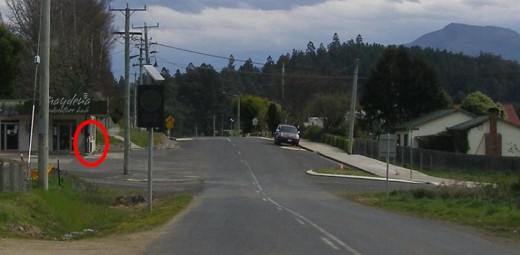 Driving through the old logging town of ‘Maydena’
– a closed so-called ‘Adventure Hub’ on the left, yet its diesel bowser (circled) open for Forestry Tasmania vehicles and observed in used by Editor 20110928. Driving through the old logging town of ‘Maydena’
– a closed so-called ‘Adventure Hub’ on the left, yet its diesel bowser (circled) open for Forestry Tasmania vehicles and observed in used by Editor 20110928.
.
Reminiscent of Australia’s 1850s Gold Rush, Tasmanian folk would have been lured west by Forestry to the promise of bountiful tall timber delivering reliable logging income and the promise of building personal wealth.
But along the Gordon River Road there is a stark absence of Forestry wealth. Instead it seems Forestry has abandoned these Gordon River Road communities.
What Forestry has done is to sell out Tasmania’s traditional woodcraft industry for short term profit from flogging quality Tasmanian hardwood as cheap asian woodchips, destroying Tasmania’s forests timber communities in the process. Then Gunns got greedy and Tasmania’s timber reputation has deteriorated thereafter.
Now Forestry Tasmania are clearfelling and selling out Tasmania’s rare forests to the asians direct, to the likes of Ta Ann. Forestry Tasmania is no more than a corporate pimp of Tasmanian rare forest heritage.
.
“The road into this attraction is lined with stage sets of wilderness.”
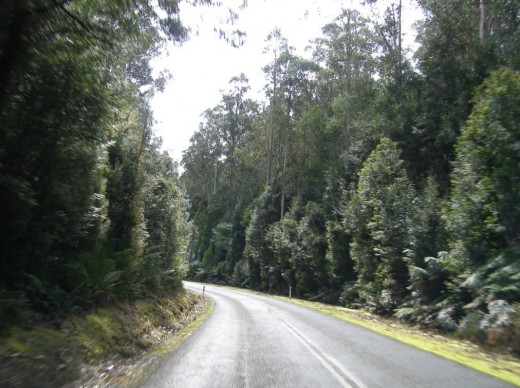 Driving further west along the HEC Gordon River Road
– bulldozed in 1964 through 64km of pristine wilderness forest by the Hydro Electric Commission, and
funded by the then Menzies federal government at a cost of £2.5 million (likely twenty times that in today’s terms – i.e. $50 million.
. Driving further west along the HEC Gordon River Road
– bulldozed in 1964 through 64km of pristine wilderness forest by the Hydro Electric Commission, and
funded by the then Menzies federal government at a cost of £2.5 million (likely twenty times that in today’s terms – i.e. $50 million.
.
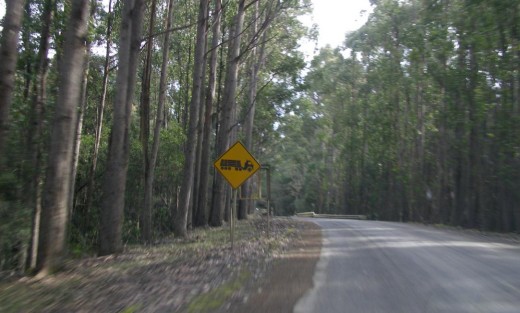 Gordon River Road – signposted logging country Gordon River Road – signposted logging country
.
“At the rise of a hill, just before the nose of the car tilts downwards, passengers might glimpse a balding peak”
 The balding peak of Forestry Tasmania’s cable logging…’a fleeting insight into the world behind the verge’.
(Photo by editor 20110928 while on Gordon River Road heading west) The balding peak of Forestry Tasmania’s cable logging…’a fleeting insight into the world behind the verge’.
(Photo by editor 20110928 while on Gordon River Road heading west)
.
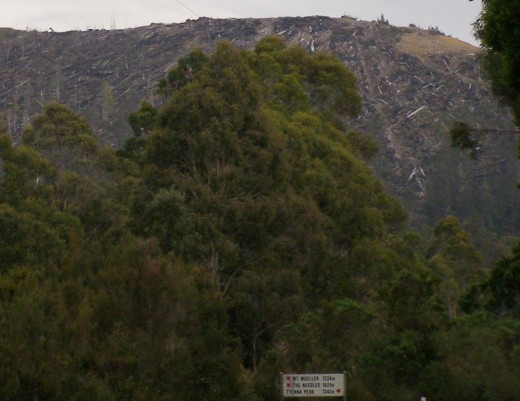 An entire hill of wild Tasmanian forest savagely cabled logged bare by Forestry Tasmania
Tourists can now see this from Gordon River Road.
(Photo by editor 20110928. Click photo to enlarge.)
An entire hill of wild Tasmanian forest savagely cabled logged bare by Forestry Tasmania
Tourists can now see this from Gordon River Road.
(Photo by editor 20110928. Click photo to enlarge.)
.
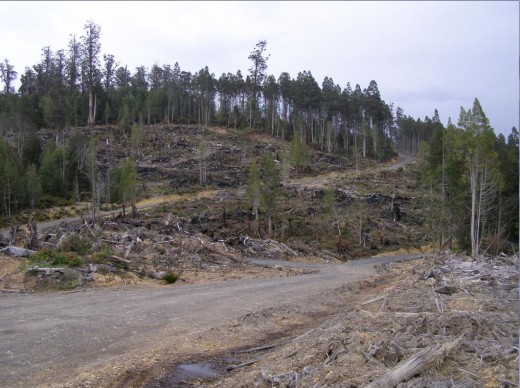 Beyond the lock gates lies the ecological holocaust
(Photo by editor 20110928. Click photo to enlarge.) Beyond the lock gates lies the ecological holocaust
(Photo by editor 20110928. Click photo to enlarge.)
.
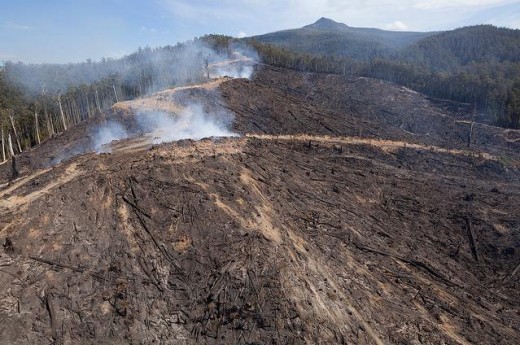 Styx Valley Holocaust
(Photo by Rob Blakers) Styx Valley Holocaust
(Photo by Rob Blakers)
.
 Tasmania’ s Styx Holocaust
September 2011 (Photo by Alan Lesheim)
Tasmania’ s Styx Holocaust
September 2011 (Photo by Alan Lesheim)
.
 Forestry Tasmania’s Killing Fields
Forestry Tasmania’s Killing Fields
.
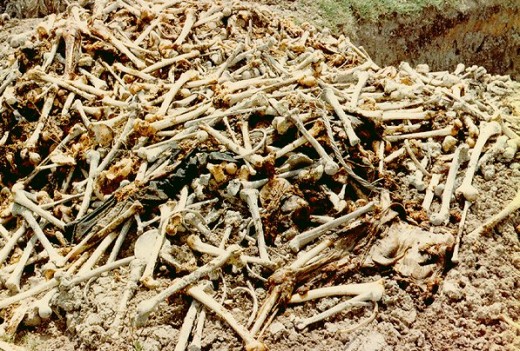 Cambodia’s Khmer Rouge Killing Fields
(Human mass murder comparable to Tasmania’s mass forest murder
– both crimes consistently against life) Cambodia’s Khmer Rouge Killing Fields
(Human mass murder comparable to Tasmania’s mass forest murder
– both crimes consistently against life)
.
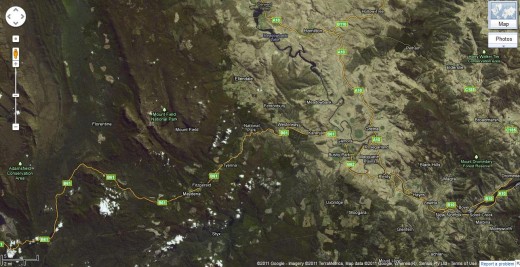 Google Maps (September 2011) satellite view of the forest rape by Forestry Tasmania
.
Google Maps (September 2011) satellite view of the forest rape by Forestry Tasmania
.
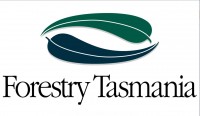 . .
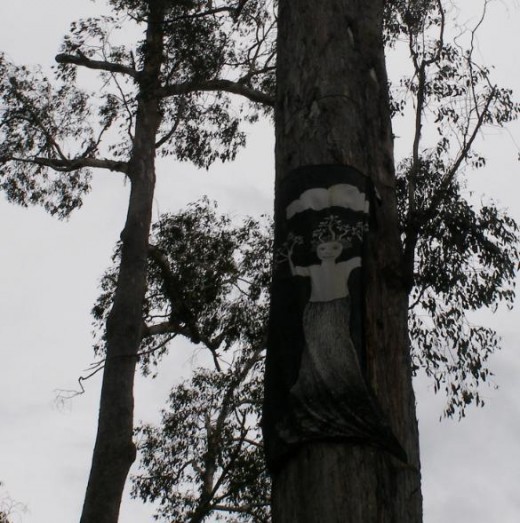 Camp Flozza’s symbolic goddess of the ancient Florentine Forest
~ eco-raped by Forestry Tasmania in its January 2009 raid
Camp Flozza’s symbolic goddess of the ancient Florentine Forest
~ eco-raped by Forestry Tasmania in its January 2009 raid
.
 And they wonder why the people protest and are prepared to be arrested?
(Photo of forest defender being arrested at Forestry Tasmania’s police raid on Camp Flozza,
Upper Florentine Valley, 13th January 2009) And they wonder why the people protest and are prepared to be arrested?
(Photo of forest defender being arrested at Forestry Tasmania’s police raid on Camp Flozza,
Upper Florentine Valley, 13th January 2009)
.
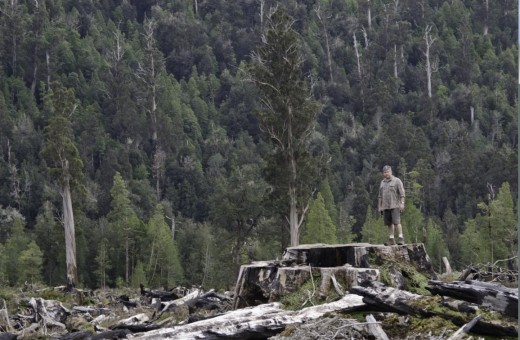 Styx Valley Holocaust by Forestry Tasmania, September 2011
(Photo of editor 20110928. Click photo to enlarge.)
Styx Valley Holocaust by Forestry Tasmania, September 2011
(Photo of editor 20110928. Click photo to enlarge.)
.
.
Forestry Tasmania padlocks gates 10 kilometres from clearfell around a protected Wedge-tailed Eagle nest
[Source: ‘Loggers breach eagle nest protection laws again‘, Bob Brown, 20090827, ^http://bob-brown.greensmps.org.au/category/issues/environment/forestry/wielangta]
‘In the breeding season, a clear felling operation in Tasmania’s wild Upper Huon Valley has breached guidelines by smashing down forests next to an endangered Tasmania’s Wedge-tailed eagles’ nest. The Tasmanian Wedge-tailed eagle, with wingspan up to 3 metres, are one of the Earth’s 6 largest eagle species.
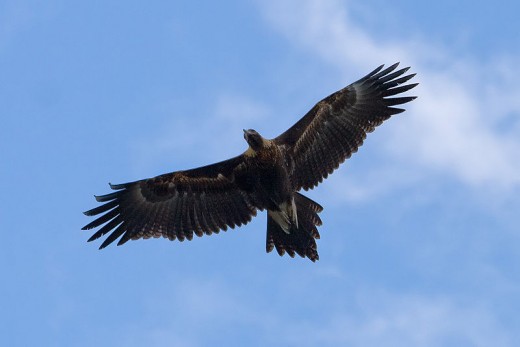
“After repeated controversies about woodchip operations burning or destroying eagle nests and causing failure of nesting because of bulldozers and chainsaws operations near nests, this failure of protection in the Huon is inexcusable. It makes a mockery of logging industry propaganda,” said Australian Greens Leader Bob Brown.
“The Ministers for Forestry and Environment who are responsible for Australia’s rare and endangered species don’t know, and don’t act in any helpful way.”
“It is as if the Howard Government never left office. These ministers have washed their hands of their role in the Wedge-tailed eagles’ fate. Logging laws in Tasmania state that a minimum of 10 hectares be left around an eagle’s nest,” said Senator Brown.
Forestry Tasmania has erected locked gates 10 kilometres from the nest logging site preventing public or media inspection.’
.
Footage of the logged area and nest available here (on YouTube):

.
.
Meanwhile Forestry Tasmania on its ‘Adventure Forests‘ website promotes its ‘Top of the World Tour‘ from Maydena…

…’Go wild where eagles soar…Make the escape to the Eagle’s Eyrie on a Top of the World Tour.You’ll experience all the fun of the Railtrack Rider as you travel into the heart of the forest to explore long-abandoned bush heritage, before emerging to an alpine wonderland and an eagle’s eye view over the Tasmanian wilderness. There’s plenty of time for indulgence as well, with an individually-prepared gourmet lunchbox and fine regional wines enjoyed in the fireside comfort of the Eagles Eyrie.’
^http://adventureforests.com.au/maydena
.
.
‘The real voyage of discovery consists not in seeking new landscapes
but having new eyes’
~ Marcel Proust, French novelist
Tags: Anna Krien, Cable Logging, Camp Flozza, deforestation, Fitzgerald, Florentine Valley Holocaust, Forestry Holocaust, Forestry Locked Gates, Forestry Tasmania, Gordon River Road, having new eyes, Into the Woods, Maydena, Maydena Adventure Hub, Mount Tim Shea, National Park hotel, Styx Big Tree Reserve, Styx Forest, Styx Valley, Styx Valley Holocaust, Ta Ann, Tasmania, Tasmania's Ancient Forests, Tasmania's South West, Tasmania's Wild Forests, Upper Florentine Forest, Wedge-tailed Eagle, Westerway, wild forests
Posted in Eagles, Tasmania (AU), Threats from Deforestation, Threats to Wild Tasmania | No Comments »
Add this post to Del.icio.us - Digg
Saturday, October 8th, 2011
Tasmania’s ancient Eucalyptus regnans of the Upper Florentine, South-West Tasmania…chainsawed in utter spite by Forestry Tasmania in its infamous forest raid on Tuesday 13th January 2009.
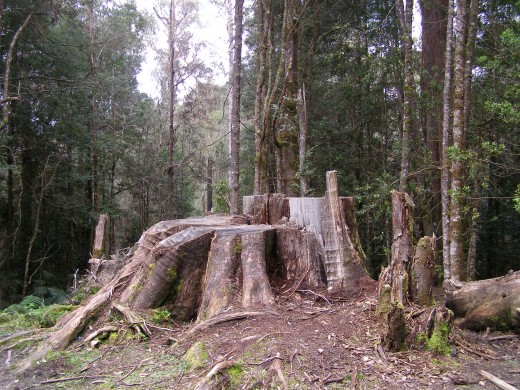 (Photo at Camp Flozza, Upper Florentine, South-West Tasmania, by editor 20110928,
Photo free as always in public domain – click to enlarge, then click to enlarge again)
(Photo at Camp Flozza, Upper Florentine, South-West Tasmania, by editor 20110928,
Photo free as always in public domain – click to enlarge, then click to enlarge again)
.
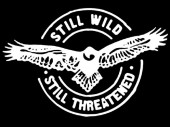 ^www.stillwildstillthreatened.org
^www.stillwildstillthreatened.org
.
‘There are people at Forestry who obviously don’t see green,
they see red..
The bunker mentality surfaces,
the big boots go in,
the chainsaws are fired up.
and ‘Common Sense’…goes out the window.’
[Source: Editorial, The Mercury, 20070219]
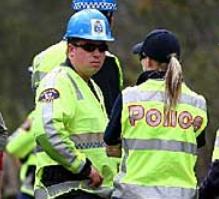
.
.
The 2009 Bartlett-Gordon Old Growth Massacre
 Then Tasmanian Premier David Bartlett Then Tasmanian Premier David Bartlett
.
 Then Forestry Tasmania Managing Director Bob Gordon Then Forestry Tasmania Managing Director Bob Gordon
.
13 January 2009: ‘Camp Floz Busted…Camp Flozza was raided by 60 cops this morning. They are back in force to ensure logging starts in the pristine Upper Florentine. They are held off by 3 conservationists in 50m high tree sits, 2 in cars locked to the road, and one in a tunnel.’
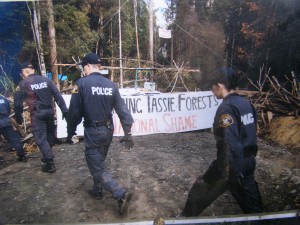 . .
‘Push came to shove in the Upper Florentine Valley yesterday. Scuffles broke out as about 200 protesters confronted a line of police blocking access to a contested logging road. Police arrested 15 people during yesterday’s Community Walk-In For the Florentine march.
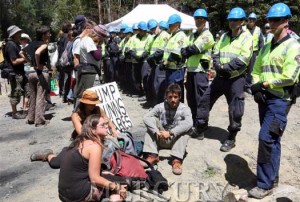
…Most of the old-growth forest to be cut in the area will become woodchips.
The two-year-old protest camp was destroyed on Tuesday although four protesters continued a vigil on two treetop platforms. They could be heard shouting their defiance throughout yesterday’s protest.
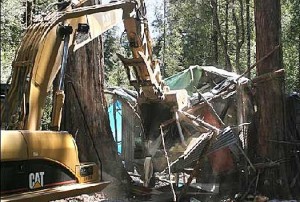
“It makes a mockery of the clever and kind Bartlett rhetoric when carbon-rich old-growth forests in an intact valley of World Heritage value are being opened up with a brand new logging road for clearfelling.” ~ Wilderness Society spokesman Vica Bayley.

Late yesterday, Derwent district forest manager Steve Whiteley said contractors had resumed work. “Our staff and contractors are cleaning up the site of Camp Florentine and undertaking road repair and construction,” he said. “We have had plans in place for several years to harvest a 50ha coupe and to build four kilometres of road.’
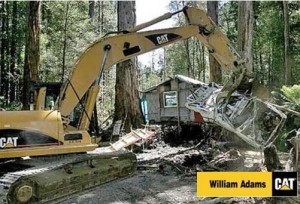
[Source: Arrests at Camp Flozza’, by David Killick, 20090114, ^http://www.themercury.com.au/article/2009/01/14/49611_tasmania-news.html]
.
.
‘Eyes that see much, and have so much seen’
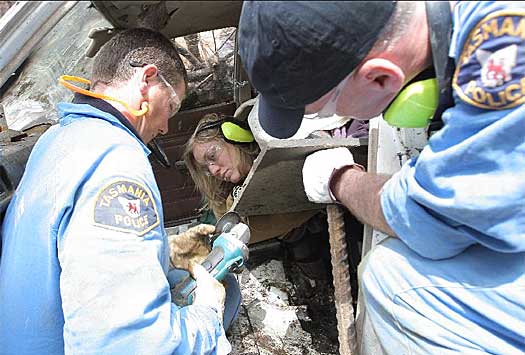 Taking a last stand to save Tasmania’s ancient forests
January 2009 police raid Camp Flozza, the front line defence of the Upper Florentine Forests Taking a last stand to save Tasmania’s ancient forests
January 2009 police raid Camp Flozza, the front line defence of the Upper Florentine Forests
.
 “Here’s to the crazy ones, the misfits, the rebels, the troublemakers, the round pegs in the square holes “Here’s to the crazy ones, the misfits, the rebels, the troublemakers, the round pegs in the square holes
… the ones who see things differently — they’re not fond of rules… You can quote them, disagree with them, glorify or vilify them, but the only thing you can’t do is ignore them because they change things… they push the human race forward,
and while some may see them as the crazy ones, we see genius,
because the ones who are crazy enough to think that they can change the world, are the ones who do.”
~ Steve Jobs (1995-2011)
.
.
O Brave.. ‘New Tasmania?’
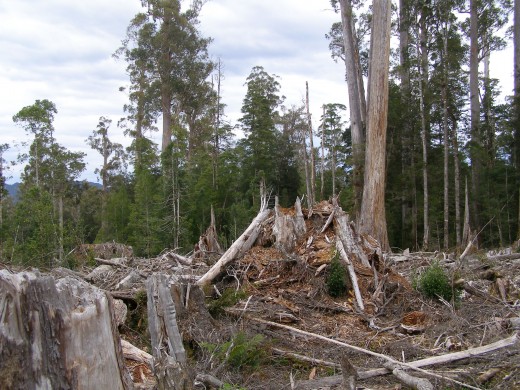
Upper Florentine under current industrial attack from Forestry Tasmania
(Photo at Camp Flozza by editor 20110928, free in public domain – click to enlarge, then click to enlarge again)
.
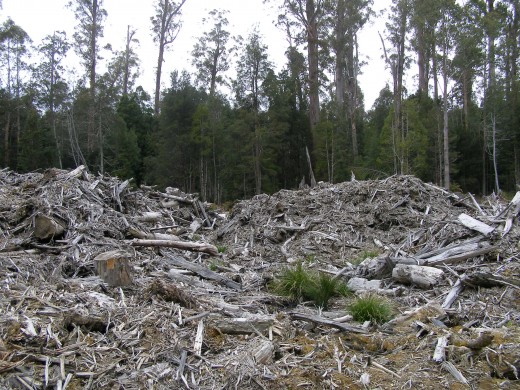 …those who come raiding at dawn.
(Photo at Camp Flozza by editor 20110928, free in public domain – click to enlarge, then click to enlarge again) …those who come raiding at dawn.
(Photo at Camp Flozza by editor 20110928, free in public domain – click to enlarge, then click to enlarge again)
.
‘The struggle for the soul of the island has raged for 200 years.
And it rages still, and still governments divide us against ourselves.
Resistance now is the staunch child of resistance past.
And it bodes for the future.’
~ Pete Hay
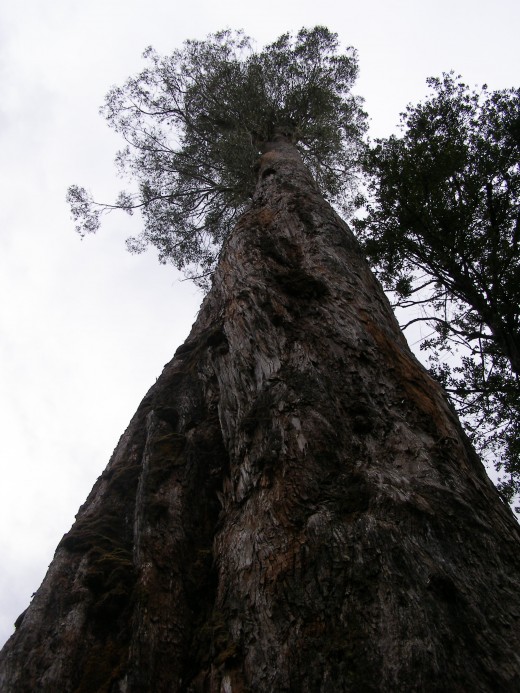 (Photo at Camp Flozza by editor 20110928, free in public domain – click to enlarge, then click to enlarge again)
(Photo at Camp Flozza by editor 20110928, free in public domain – click to enlarge, then click to enlarge again)
.
‘What must I do to protect you – he yells the trees…’
~ Barney Roberts
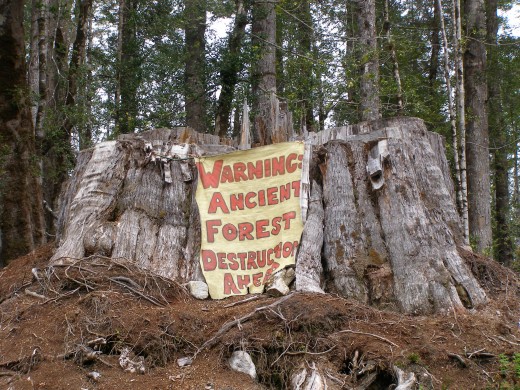 (Photo at Camp Flozza by editor 20110928, free in public domain – click to enlarge, then click to enlarge again) (Photo at Camp Flozza by editor 20110928, free in public domain – click to enlarge, then click to enlarge again)
.
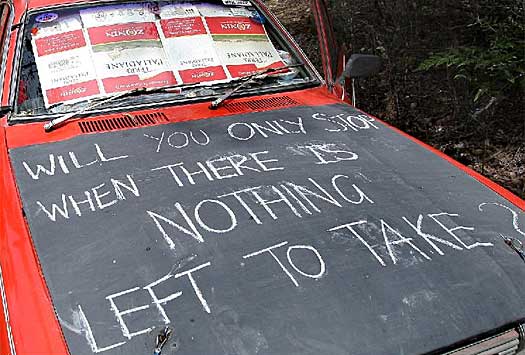 (Photo at Camp Flozza January 2009 by Sam Rosewarne, The Mercury newspaper)
(Photo at Camp Flozza January 2009 by Sam Rosewarne, The Mercury newspaper)
.
‘Documentary photography offers the future a view of the past.
It bears witness in an age when publications turn toward entertainment, celebrity and spin.
This is the history of Tasmania.
It should be documented.’
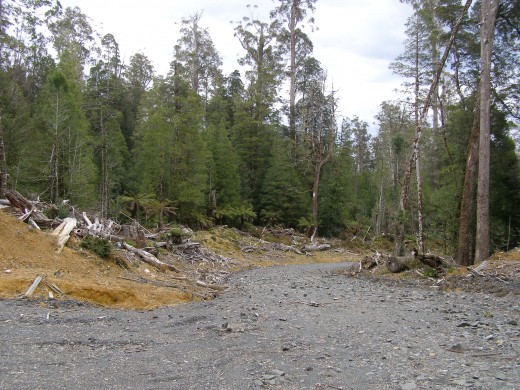 Foresty Tasmania ~ they came with 60 police,
they bulldozed their road through pristine old growth forest
(Photo at Camp Flozza by editor 20110928, free in public domain – click to enlarge, then click to enlarge again) Foresty Tasmania ~ they came with 60 police,
they bulldozed their road through pristine old growth forest
(Photo at Camp Flozza by editor 20110928, free in public domain – click to enlarge, then click to enlarge again)
.
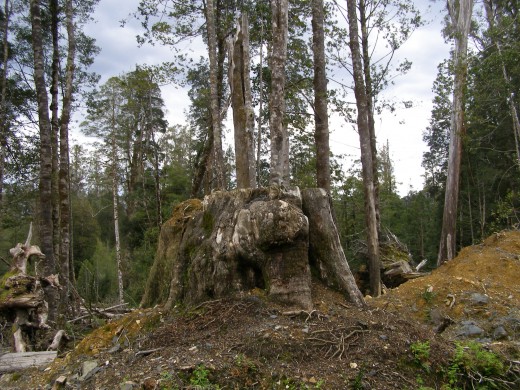 Forestry Spite
(Photo at Camp Flozza by editor 20110928, free in public domain – click to enlarge, then click to enlarge again) Forestry Spite
(Photo at Camp Flozza by editor 20110928, free in public domain – click to enlarge, then click to enlarge again)
.
[Quotes from Matt Newton & Pete Hay’s 2007 important photographic book , ‘The Forests’, ^http://www.matthewnewton.com.au/#/Documentary/The%20Forests/1]
.
.
Tags: 2009 Bartlett-Gordon Massacre, Bob Gordon, Camp Flozza, Chinese Imperial Dictatorship, David Bartlett, Eucalyptus regnans, forest exploitation, forestry spite, Forestry Tasmania, greedy commercial gain, Martin Niemöller, South-West Tasmania, Steve Jobs, Still Wild Still Threatened, Tasmania's holocaust, Tasmania's Thylacene, Tasmanian ancient forests, Upper Florentine Forest, utter spite
Posted in Tasmania (AU), Threats from Deforestation, Threats to Wild Tasmania | No Comments »
Add this post to Del.icio.us - Digg
Thursday, September 22nd, 2011
Like a skin-burned landscape flaking, Tasmania’s disappearing wild forests are revealed on Google Maps. The 19th Century colonial timber-getting landscape around Hamilton in the lighter treeless region on the right of the image. In 2011 the colonial mentality pervades in burnt clearfelled coupes on the left side of the satellite image below. Tasmania’s tall Eucalypt forests and the ecosystems they support face a denuded Hamilton vision or at best a sterile silviculture.
Fourth generation Tasmanian loggers knowing no better, mindlessly scarring their rich timbered homeland for a pittance to feed the profits of multinationals, and knowingly deny their children the endless Tasmanian forests they knew as children. It is Thylacene Bigotry repeated down generations.
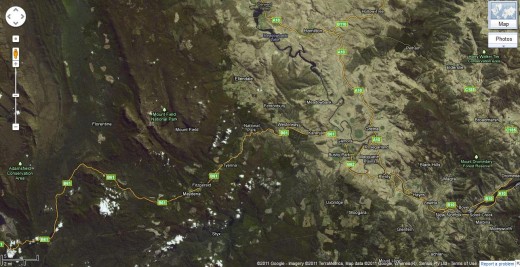 Satellite Map of Tasmania showing vast areas of clearfelled native forest scars.
(Click photo to enlarge)
(Simply go to Google and type in Tasmania Map in Google and zoom in)
.
Satellite Map of Tasmania showing vast areas of clearfelled native forest scars.
(Click photo to enlarge)
(Simply go to Google and type in Tasmania Map in Google and zoom in)
.
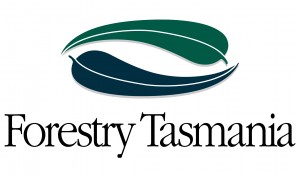
The culprit, Forestry Tasmania (FT), has made it a cliche to hide its destruction from public roads, but can no longer hide from Google Maps.
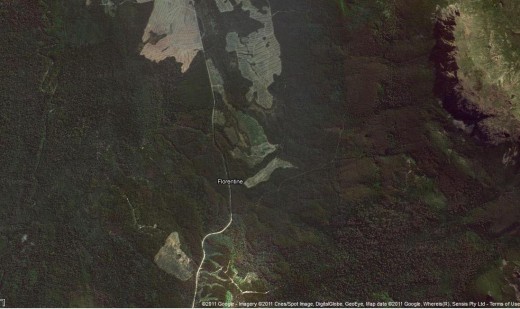 Zooming in on the massive scaring of the Florentine Forest.
(click to enlarge image) Zooming in on the massive scaring of the Florentine Forest.
(click to enlarge image)
(Google Maps)
.
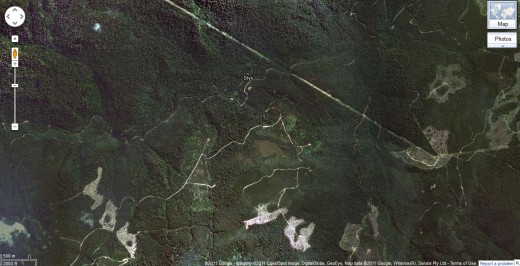 Zooming in on the massive scaring of the Styx Valley Forest.
(Google Maps) Zooming in on the massive scaring of the Styx Valley Forest.
(Google Maps)
.
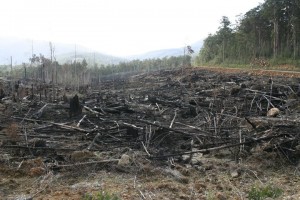
‘This charred scene of forest devastation here in Southern Tasmania stands as a stark symbol of the industrial scale logging operations that are ripping apart Australia’s native forests every single day. Harvey Norman needs to stand up, show some genuine environmental leadership and stop selling native forest products to the Australian people’ said Ms Majewski. [^http://www.thelaststand.org.au/]
[Source: ‘Massive banner unfurled in Tasmania drawing attention to Harvey Norman forest destruction’, by anonymous 20010811, ^http://indymedia.org.au/2011/08/15/massive-banner-unfurled-in-tasmania-drawing-attention-to-harvey-norman-forest-destruction. Watch Video]
.
.
So where does Harvey Norman’s EKO Wood ‘Jatoba’ come from?…
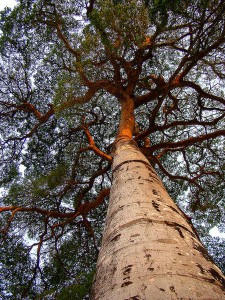 Jatobá (Hymenaea courbaril)
A tall rainforest hardwood tree common to the Caribbean, Central, and South America.
It is killed for hardwood furniture and flooring.
Go to hell Harvey Norman, go! Jatobá (Hymenaea courbaril)
A tall rainforest hardwood tree common to the Caribbean, Central, and South America.
It is killed for hardwood furniture and flooring.
Go to hell Harvey Norman, go!
.
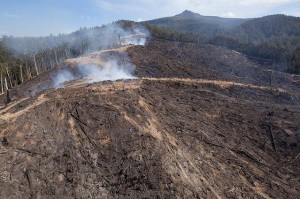
The bastards are clear-felling Tasmania’s majestic Styx Valley in 2011!
Do they hate Tasmania that much?
(Source: ^http://www.thelaststand.org.au/)
(Photo: R. Blakers)
.
..
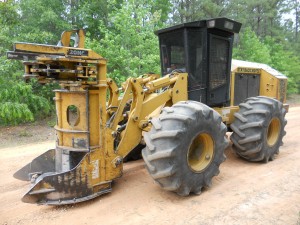 Tools of the trade for Forestry Tasmania – Industrial Forestry Bondage – a CAT 553 fellerbuncher- Tools of the trade for Forestry Tasmania – Industrial Forestry Bondage – a CAT 553 fellerbuncher-
But then machines are more efficient than people, and unlike selective logging, with contract woodchipping you don’t have to think ~ ‘its all good’.
Shit Money. Shit Future. Pulping Tasmania’s Heritage so that Jap’s can sell their paper back to us mugs.
(click to enlarge photo)

Husqvarna – ‘taming the wild’ and selling their last chainsaws to a dying culture
– like the Japs killing dolphins at Taijin.
.
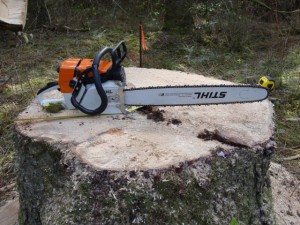 Stihl Chainsawing Tasmania’s Western Front Stihl Chainsawing Tasmania’s Western Front
.
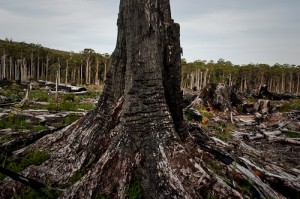 A FT holocaust survivor
. A FT holocaust survivor
.
(‘Holocaust’ comes from the Greek, holos meaning ‘completely’ and kaustos ‘burnt’
~ to burn away, leaving no trace of what was previously there. (A. Krien, 2010, p.122)
.
.
.
.
Tags: CAT 553 Fellerbuncher, EKO Wood, Forestry Tasmania, FT, Google Maps Tasmania Map, Harvey Norman, Husqvarna, Hymenaea courbaril, Industrial Forestry Bondage, Jatoba, Rob Blakers Photography, Stihl, Styx Valley, taming the wild, Tasmania's tall Eucalypt forests, Tasmania's Western Front, The Last Stand, Thylacene Bigotry, Upper Florentine Forest, woodchipping - it's all good, Woodchipping Tasmania
Posted in Tasmania (AU), Threats from Deforestation, Threats to Wild Tasmania | No Comments »
Add this post to Del.icio.us - Digg
|
|
 For the cause and their honour
Camp Flozza remembered
For the cause and their honour
Camp Flozza remembered
 Tasmanian police escort a log truck out of the Upper Florentine Valley after a week of protests, January 2009.
[Source: ‘Protests have failed to stop the log trucks’, 20090121, ABC News,
^http://www.abc.net.au/news/2009-01-21/tasmanian-police-escort-a-log-truck-out-of-the/273180]
Tasmanian police escort a log truck out of the Upper Florentine Valley after a week of protests, January 2009.
[Source: ‘Protests have failed to stop the log trucks’, 20090121, ABC News,
^http://www.abc.net.au/news/2009-01-21/tasmanian-police-escort-a-log-truck-out-of-the/273180]
 Does young Will mean blood?
Does young Will mean blood? Sacred Upper Florentine Valley being logged only a few years ago
Sacred Upper Florentine Valley being logged only a few years ago





















































































